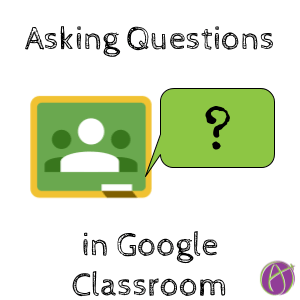Guest post by Melody McAllister

Many times when we ask our students questions, we encounter a problem: the same students answer and the same students stay quiet. Unfortunately, we often end up calling on those same students because of timing issues, under evaluation and we need to prove that mastery is happening, or we don’t even realize we just called on the same group of students because we are just trying to teach content. Students might not answer because they don’t feel comfortable in the classroom community, they battle intense shyness, or they are clueless about whatever is being taught. When we don’t call on them, and we move on with business as usual, instead of them wanting to get deeper into the content, these students might feel relief that they never landed under the teacher radar and that is the end of thinking on whatever amazing lesson you as their amazing teacher prepared.

How can we give feedback that validates students who are not as comfortable speaking out and still hold them accountable for their learning in Google Classroom? I found the best answer in Alice Keeler and Kimberly Mattina’s book, Stepping Up to Google Classroom, and that is when asking a question, help students develop a mindset of interaction. We can do this both face to face and in Google Classroom, but this is definitely an area that is more natural when using Google Classroom as a learning tool.
When we ask a question in Google Classroom, giving a variety of answering patterns, such as multiple choice or short answers can help your students, but the best thing we can do is turn on the “Students can reply to each other” option. Students will not be able to see other students’ responses until they have answered themselves, but it provides opportunities for students to interact with their peers. When students receive feedback from their teacher and peers, this is a step in the right direction of forming a healthy classroom community. It’s a way to help them understand the power of their words and focus on relationships and not solely on content. When the feedback is immature or inappropriate, you as the teacher can address this in a way that is teachable and preserve dignity at the same time if you address it without muting everyone as punishment. Unfortunately, our efforts to control everything can negate what we are teaching, so we too must learn this interaction mindset.

Google Classroom is a great way to reach our students who have struggled to be heard. It allows the wait time that is necessary for each learner, holds them accountable to learn what they need to, gives opportunity for teacher and peer interaction, but most importantly, all of this develops a mindset that welcomes interaction with others. If we teach content but not this mindset, what good is having the knowledge? We teach content in hopes that the knowledge acquired will empower our students to make change and communicate effectively in the world around them. So clicking on the “Students can reply to each other” button seems simple but is so effective when building classroom community and helping students give and receive healthy feedback.
Read this and other amazing tips in Stepping Up to Google Classroom: 50 Steps for Beginners to GET STARTED by Alice Keeler and Kimberly Mattina.








